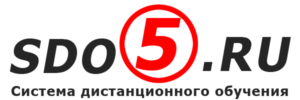Tinder is significantly various for the reason that it really is a subsidiary of a bigger publicly listed parent business, IAC, which has a suite of internet dating sites, including Match, Chemistry, OkCupid, individuals Media, Meetic, among others. With its profits report for Q1, 2017, IAC reported income of US$298.8 million from the Match Group, including Tinder as well as the aforementioned and extra solutions. Besides the profits IAC attracts from Tinder, its genuine value is based on the consumer information it creates.
Simply because IAC operates in accordance with a type of economic ‘enclosure’ which emphasises ‘the ongoing significance of structures of ownership and control of productive resources’ (Andrejevic, 2007: 299). This arrangement is made explicit in Tinder’s online privacy policy, where it is known that ‘we may share information we collect, as well as your profile and private information such as for instance your title and contact information, pictures, interests, tasks and deals on our provider along with other Match Group companies’. The problem with this for users of Tinder is their information come in continuous motion: information produced through one media that are social, changes and so is kept across numerous proprietary servers, and, increasingly, go away from end-user control (Cote, 2014: 123).
Dating as information technology
Probably the most famous extended use of dating information is the ongoing work undertaken by okay Cupid’s Christian Rudder (2014). While without doubt checking out habits in account, matching and behavioural data for commercial purposes, Rudder also published a number of blogs (then book) extrapolating from all of these habits to expose demographic ‘truths’.
By implication, the information science of dating, due to the mixture of user-contributed and naturalistic data, okay Cupid’s Christian Rudder (2014) contends, can be viewed as as ‘the brand brand new demography’. Data mined from the behavioural that is incidental we leave behind whenever doing other items – including intensely individual things such as romantic or sexual partner-seeking – transparently reveal our ‘real’ desires, preferences and prejudices, roughly the argument goes. Rudder insistently frames this process as human-centred and on occasion even humanistic in comparison to business and government uses of ‘Big Data’.
Reflecting an argument that is now familiar the wider social advantage of Big Data, Rudder has reached pains to differentiate his work from surveillance, stating that while ‘the general public conversation of information has focused mainly on a couple of things: federal federal government spying and commercial opportunity’, and in case ‘Big Data’s two operating tales are surveillance and money, for the past three years I’ve been working on a 3rd: the individual story’ (Rudder, 2014: 2). The data science in the book is also presented as being of benefit to users, because, by understanding it, they can optimize their activities on dating sites (Rudder, 2014: 70) through a range of technical examples.
While Rudder exemplifies a by-now extensively critiqued style of ‘Big Data’ as being a window that is transparent effective systematic instrument which allows us to neutrally observe social behavior (Boyd and Crawford, 2012), the part of this platform’s data operations and information countries this kind of dilemmas is much more opaque. There are further, unanswered concerns around whether the matching algorithms of dating apps like Tinder exacerbate or mitigate from the types of intimate racism along with other types of prejudice that take place in the context of online dating sites, and therefore Rudder reported to show through the analysis of ‘naturalistic’ behavioural data created on okay Cupid.
Much conversation of ‘Big Data’ nevertheless suggests a relationship that is one-way business and institutionalized ‘Big Data’ and specific users whom lack technical mastery and energy within the information that their tasks create, and that are mainly acted upon by information countries. But, within the context of mobile dating and hook-up apps, ‘Big Data’ normally being put to work by users. Ordinary users become familiar with the information structures and sociotechnical operations associated with the apps they normally use, in a few situations to come up with workarounds  or resist the app’s intended uses, along with other times to ‘game’ the app’s implicit rules of reasonable play. Within specific subcultures, the usage of information science, along with hacks and plugins for online dating sites, have created brand new forms of vernacular information technology.
or resist the app’s intended uses, along with other times to ‘game’ the app’s implicit rules of reasonable play. Within specific subcultures, the usage of information science, along with hacks and plugins for online dating sites, have created brand new forms of vernacular information technology.

Оставить комментарий